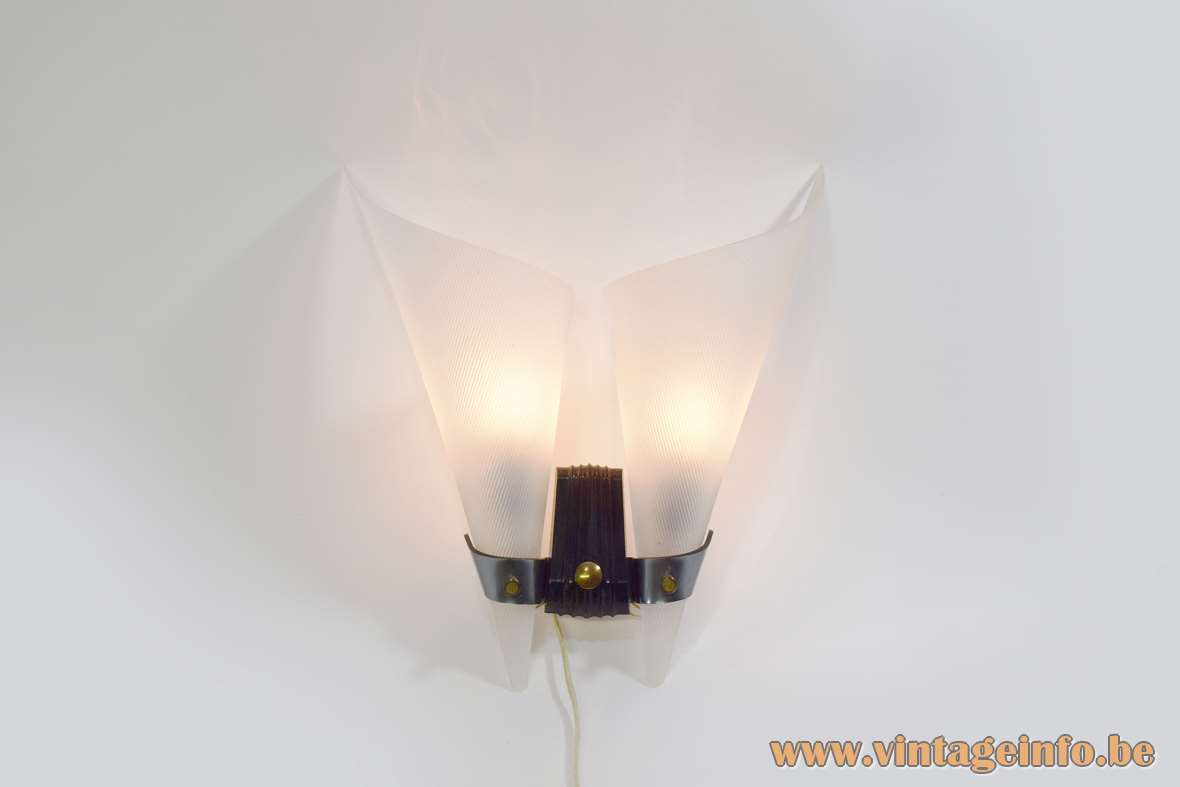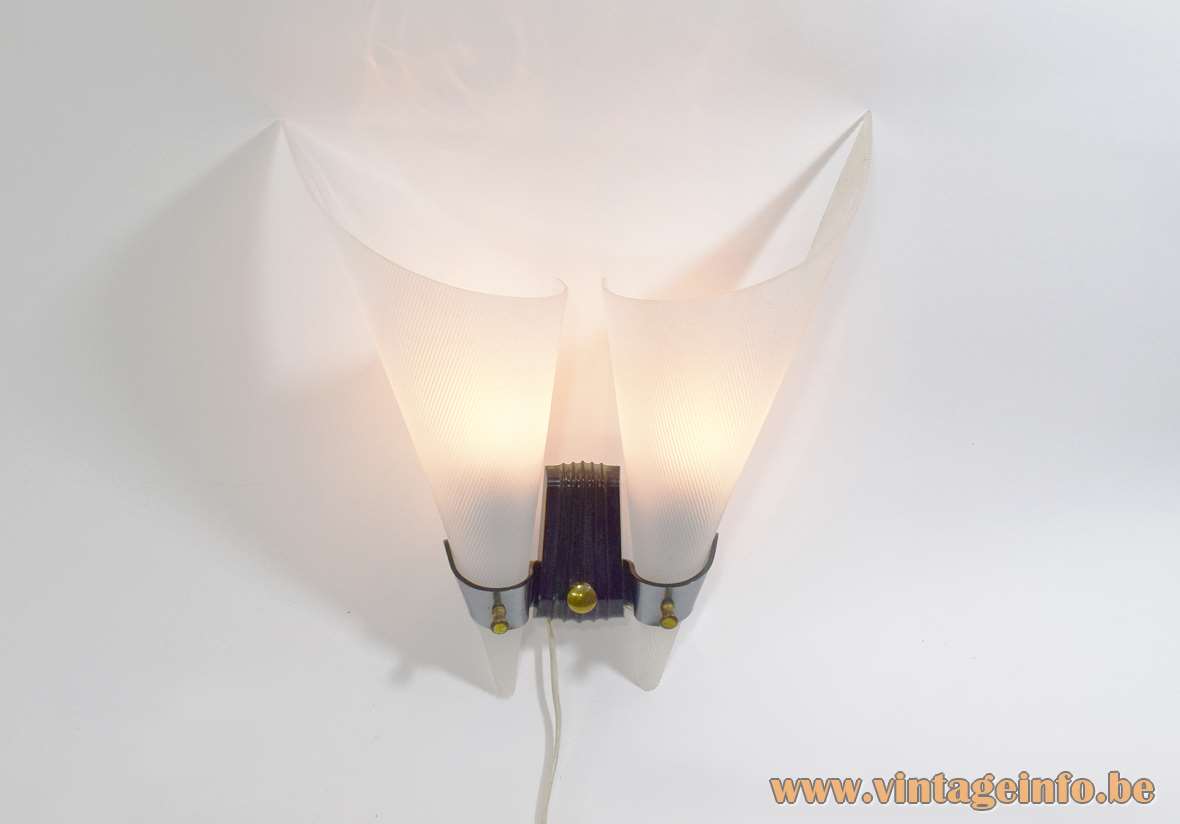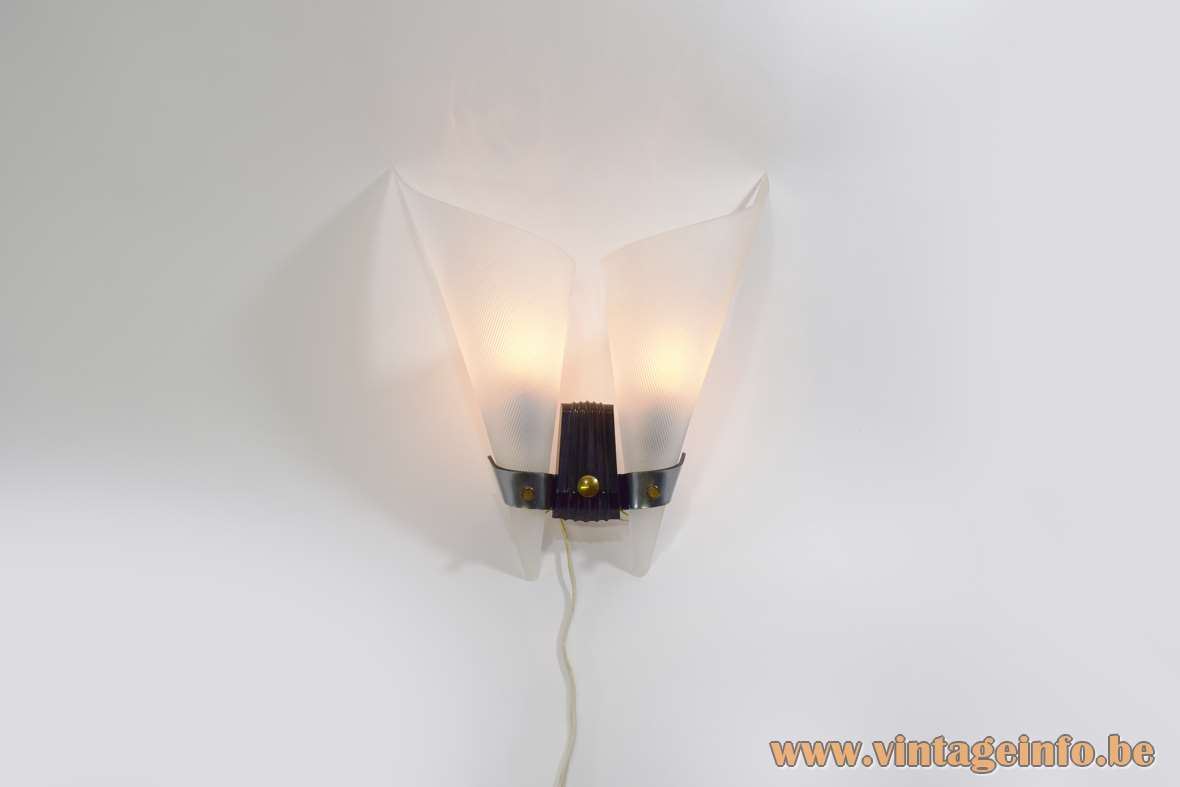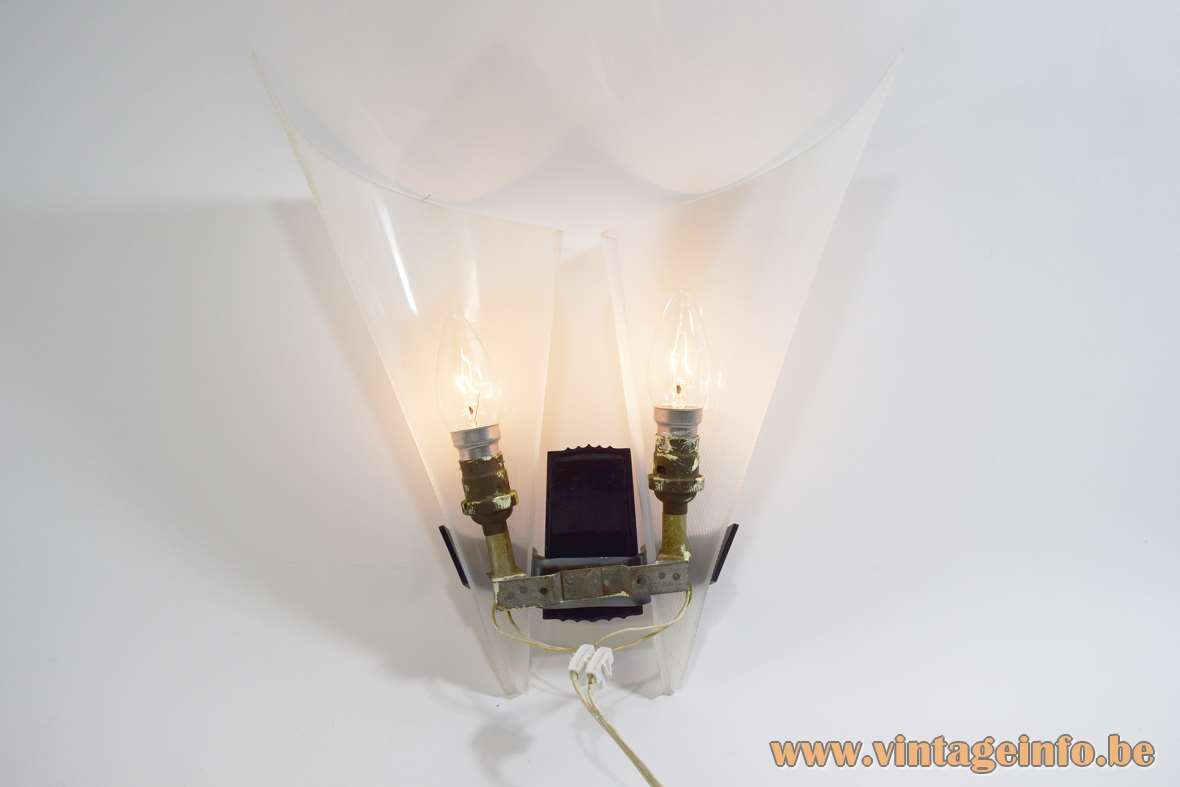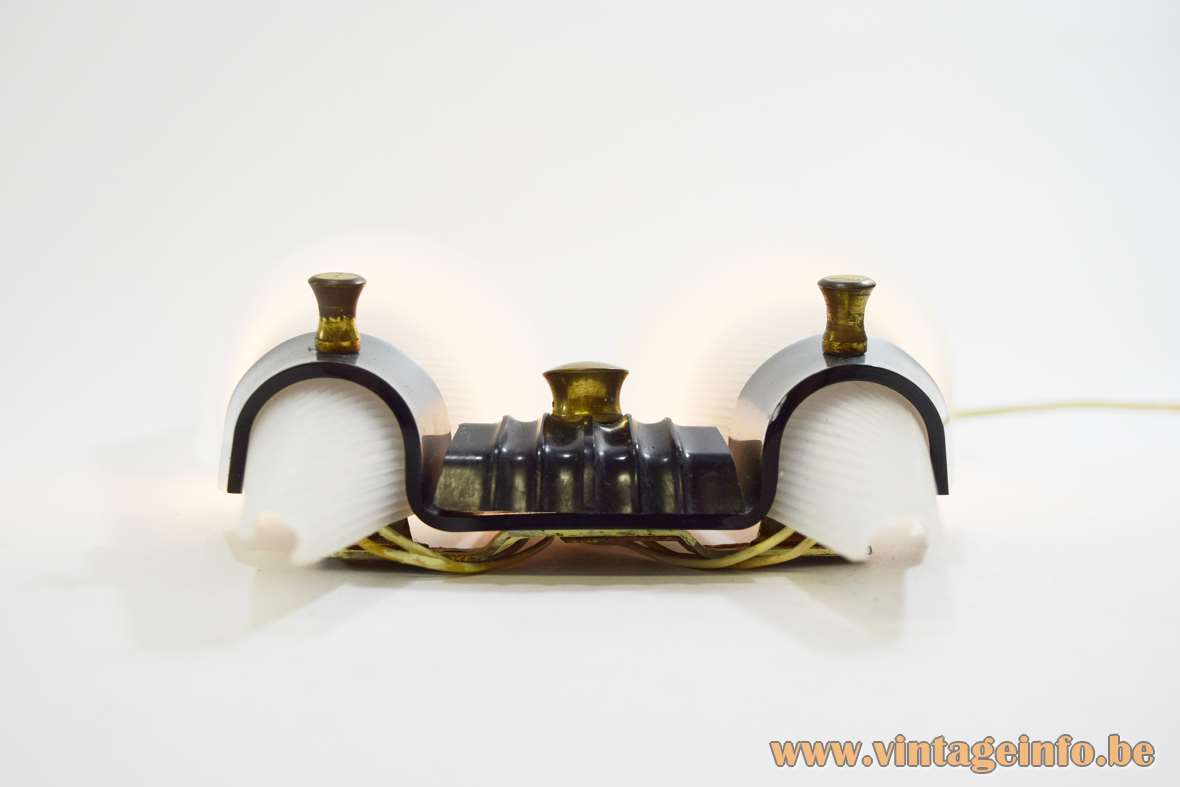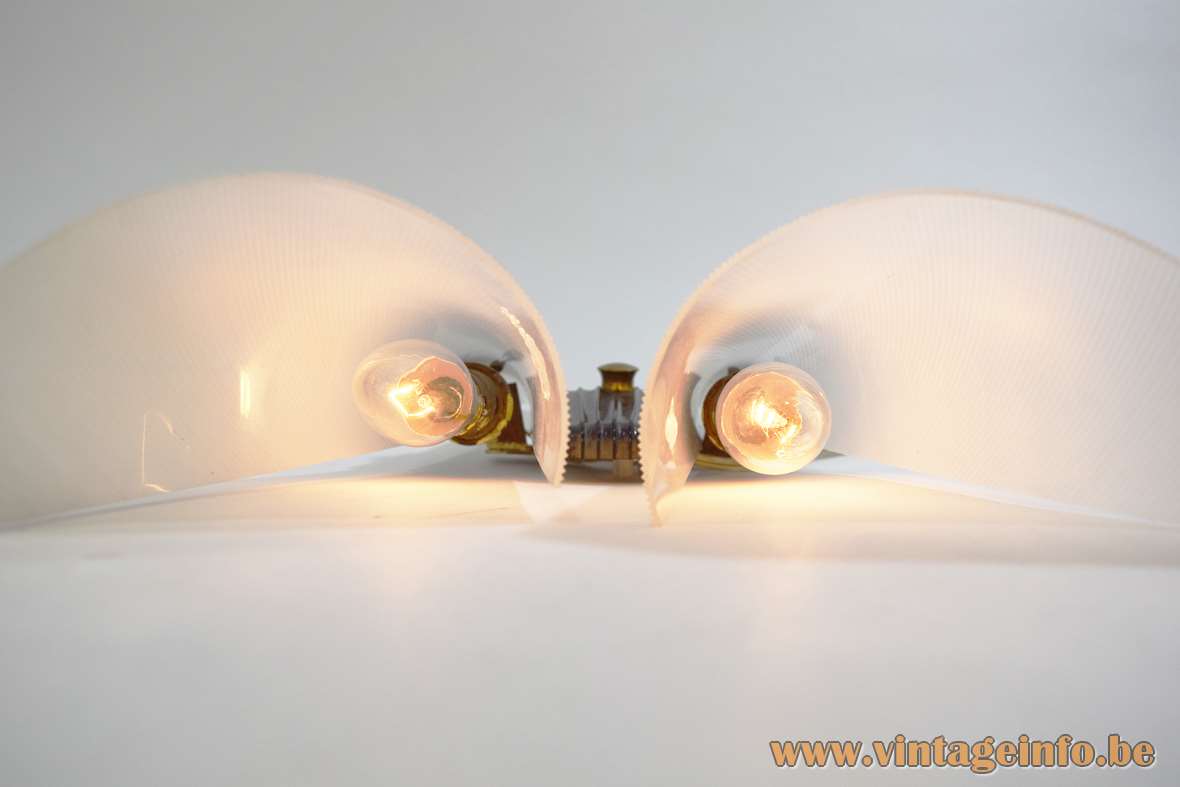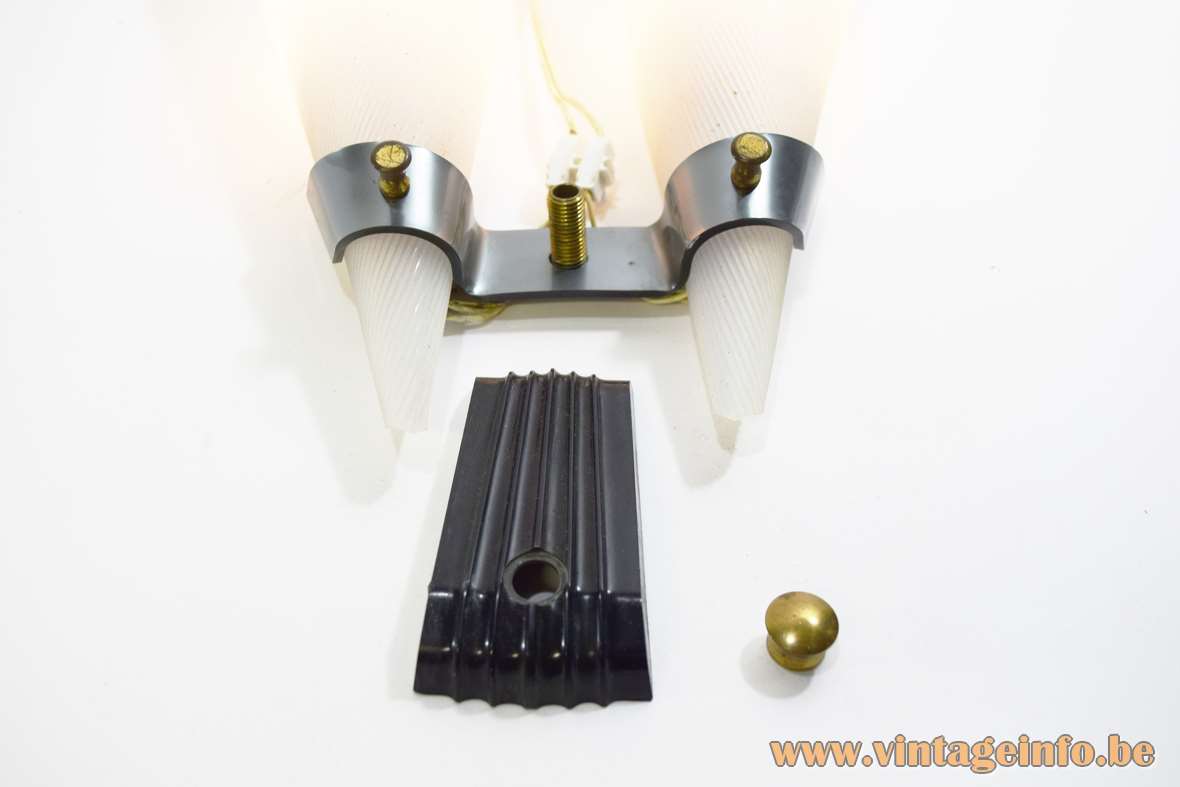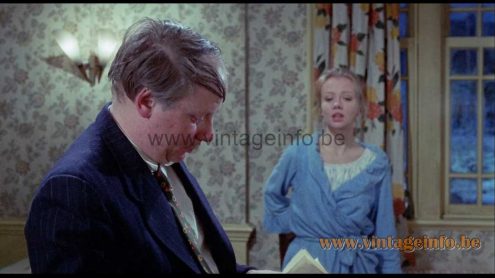Links (external links open in a new window)
Facebook – John & Sylvia Reid Collection
Hans Hoffmann-Lederer – Wikipedia
Hans Hoffmann-Lederer wall lamps – Google images
Twitter: Galerie Pascal Cuisinier A.R.P. exposition in Paris, France in 2017
Interview from 1966 with Bernard Stern about Rotaflex on the vads-website
Take A Girl Like You – 1970 film – Wikipedia
Vintageinfo
Rotaflex Night Fly Wall Lamp
Materials: Black Bakelite wall mount. Brass parts. Ribbed frosted conical “wings – butterfly – Belgian fries bags” lampshades in cellulose acetate (Rhodoïd). Galvanised iron parts. Metal B22 sockets.
Height: 37 cm / 14.56”
Width: 32 cm / 12.59”
Depth: 10 cm / 3.93”
Electricity: 2 bulbs B22, 2 x 40 watt maximum, 110/220 volt.
Any type of light bulb can be used, not a specific one preferred, but the smaller the better.
Period: 1950s – Mid-Century Modern.
Designer: A.R.P. – Atelier de Recherche Plastique – attributed.
Manufacturer: Rotaflex, Paris, France – attributed.
Other versions: It is unknown if this Rotaflex night fly wall lamp exists in other versions.
This wall lamp has 2 B22d sockets as used in France and the UK at that time.
German designer, sculptor and graphic artist Hanns Hoffmann-Lederer (1899-1970) created several wall lamps in this style in the 1950s for HL-Leuchten from Darmstadt, Germany. They were made in acrylic, the successor of cellulose acetate.
The Rotaflex plastic type was invented by Rotaflex together with the French company A.R.P. – L’ Atelier de Recherche Plastique (Plastic Research Workshop).
Atelier de Recherche Plastique
The Atelier de Recherche Plastique was founded in 1954 by Pierre Guariche (1926 – 1995), Joseph-André Motte (1925 – 2013) and Michel Mortier (1925 – 2015). The three young designers wanted to shake the codes of classicism by drawing new forms to create more accessible furniture and lights. All three met while working in the agency of designer Marcel Gascoin.
In 1954, they take part in the Salon des Arts Ménagers (Household Arts Fair) and they receive numerous prizes. Their furniture and lamps were produced by companies such as Airborne, Disderot (Atelier Pierre Disderot), Meubles TV, Huchers-Minvielle, Luminalite, Steiner and Rotaflex.
The ARP company did not last long. 3 years later in 1957, it ended business.
Rotaflex
Rotaflex was founded in 1953 and led by Bernard Stern who brought the company in a few years to one of Britain’s leading lighting makers.
John & Sylvia Reid were two of the most well known consultant designers for the lighting manufacturers Rotaflex. They are famous for their Metallux, Interplay, Honeycombs, Fernland Cylinders, Sphere lamp designs and many more. They also designed many of this type of plastic lamps.
John & Sylvia Reid also designed furniture for Stag between 1952 and 1962. Their S-range furniture is back in production, you can find it on their website.
Rotaflex received several design awards, among others, iF Design awards for cellulose acetate pendant lamps in 1957. The company no longer exists.
Cellulose acetate
Cellulose acetate is an early plastic, sold under the trade names Rhodoid in France and Great Britain, Tenite in the USA and Cellon in Germany. It was first prepared in 1865. Cellulose acetate is used as a film base in photography, for eyeglasses, cigarette filters and playing cards.
Acrylic
Acrylic: often named by its commercial name: Perspex, Plexiglas, Crylux, Acrylite, Lucite, is a thermoplastic.
Lamps in the movies!
A wall lamp in the same style was used as a prop in the British comedy film Take A Girl Like You from 1970. Starring Hayley Mills, Oliver Reed and Noel Harrison. The film is based on the 1960 novel with the same name.
